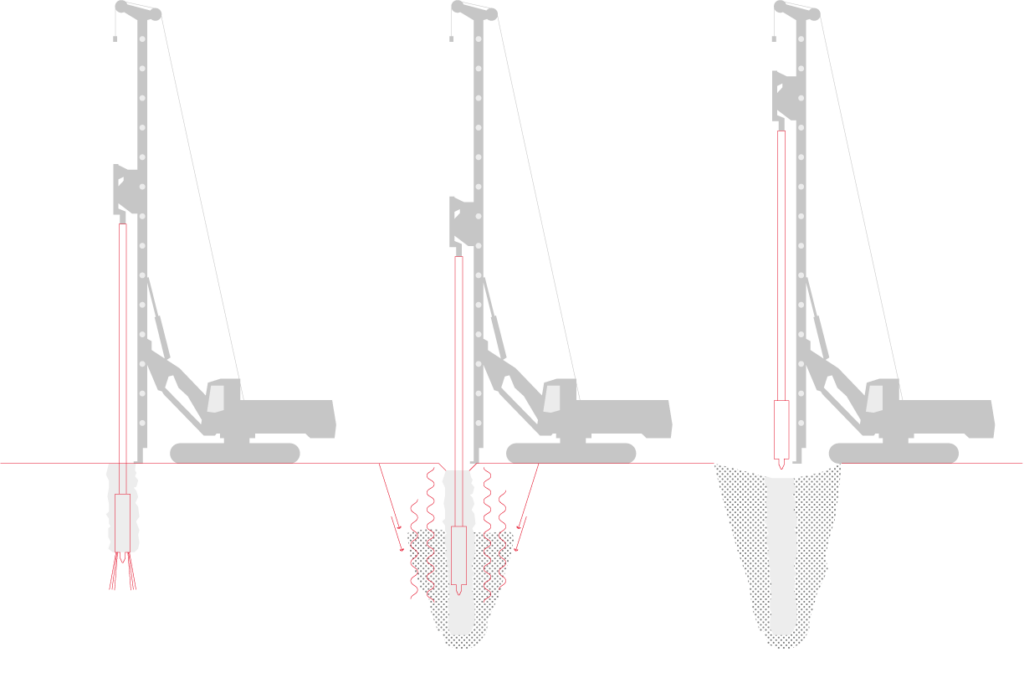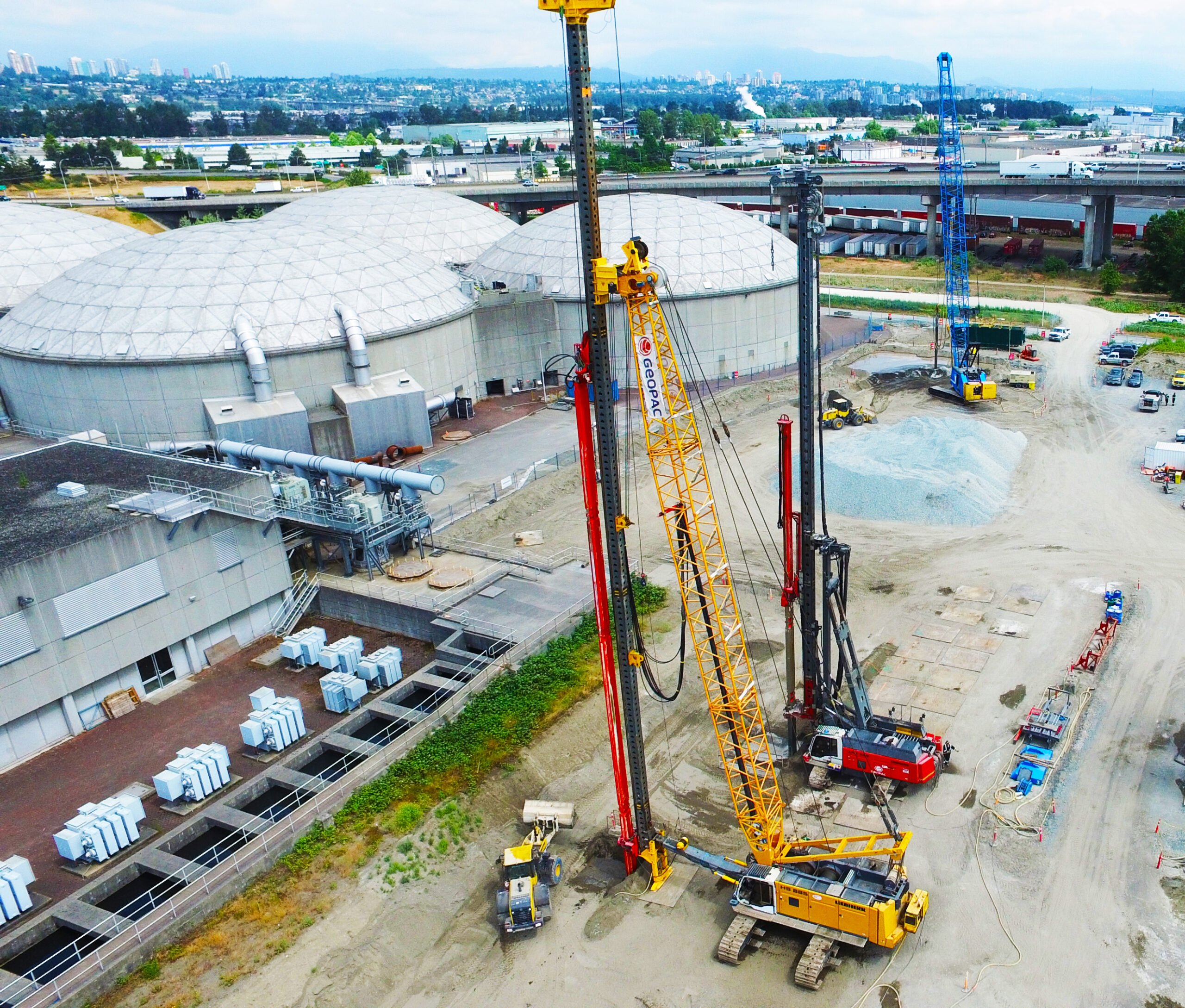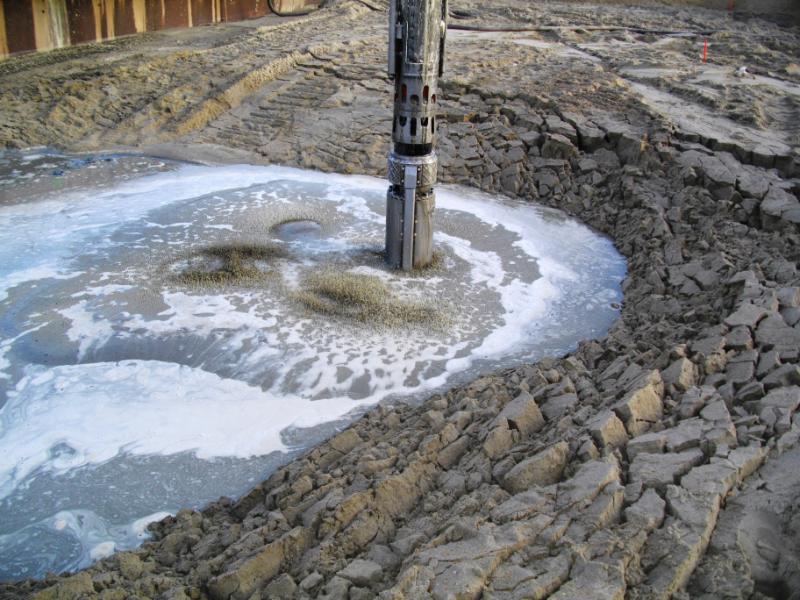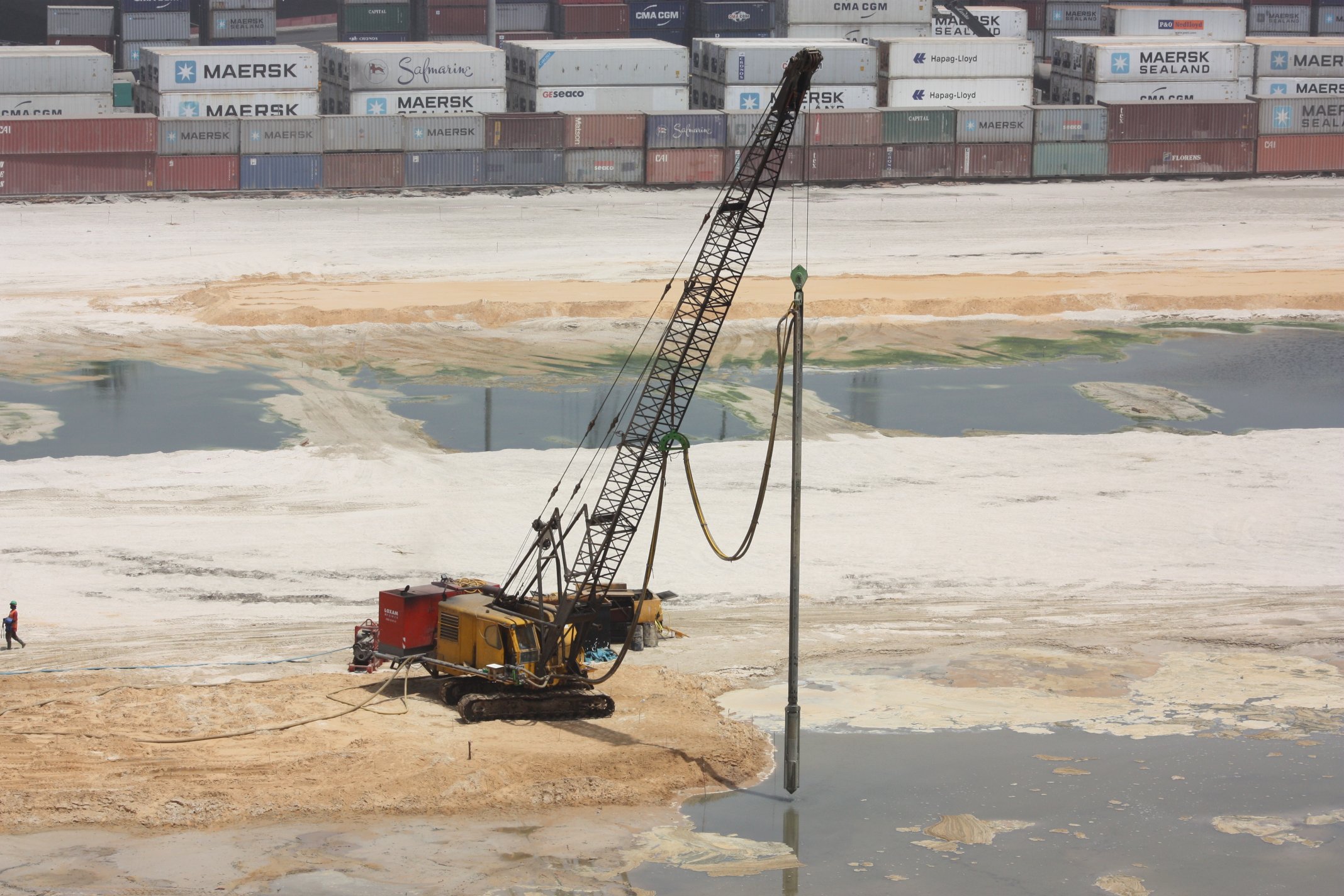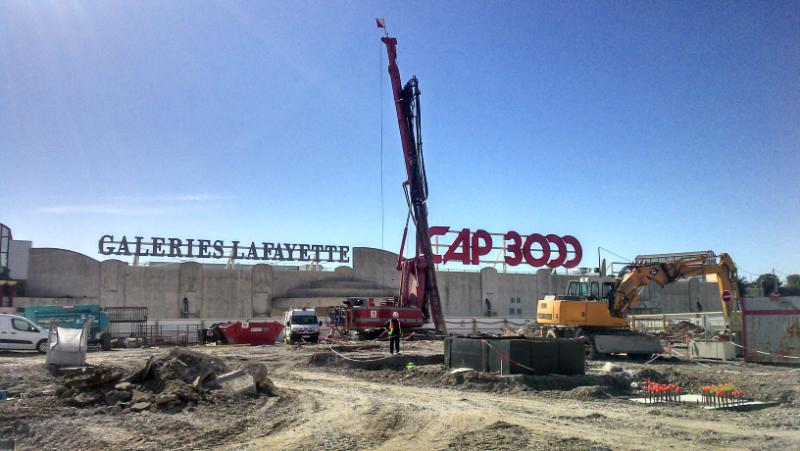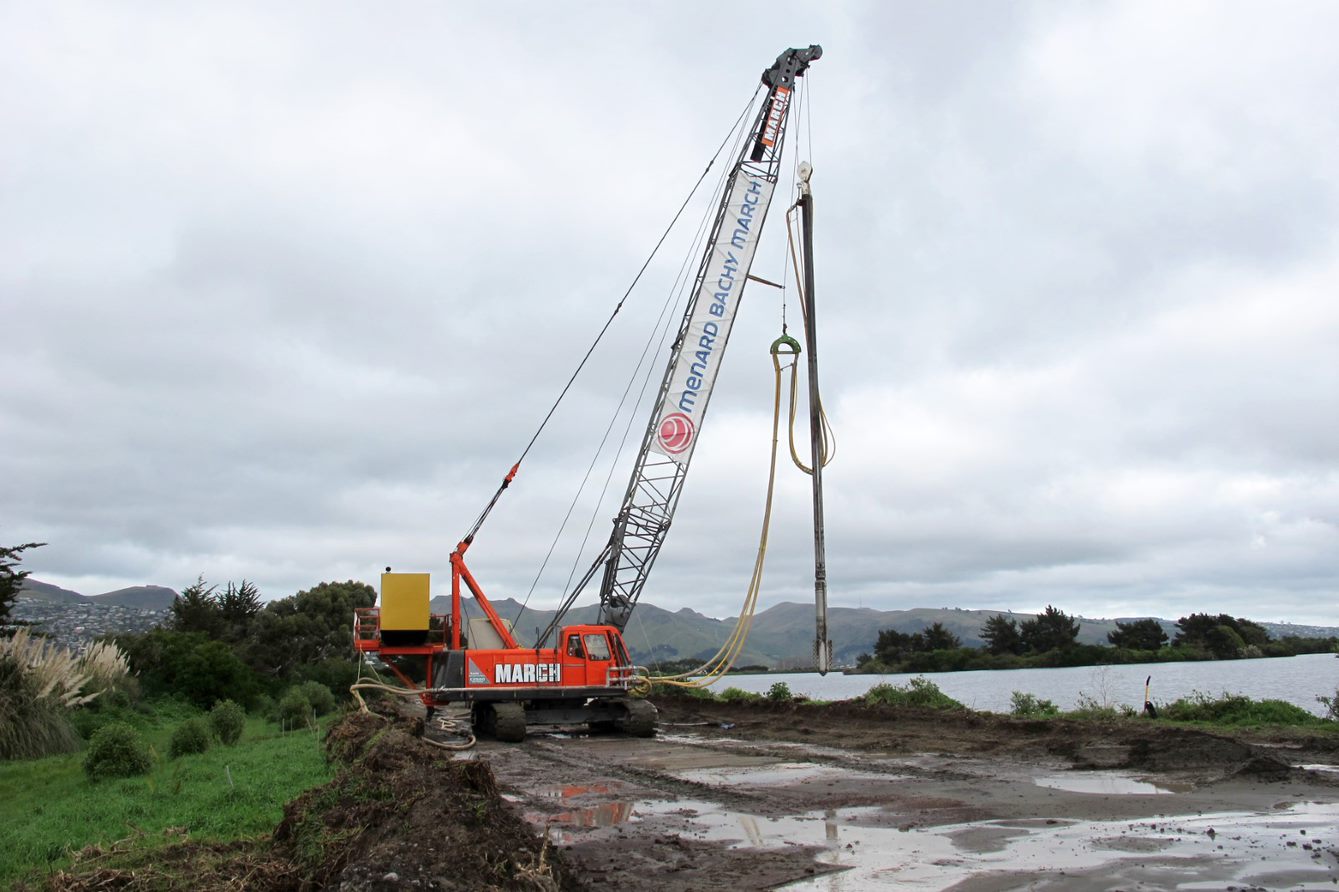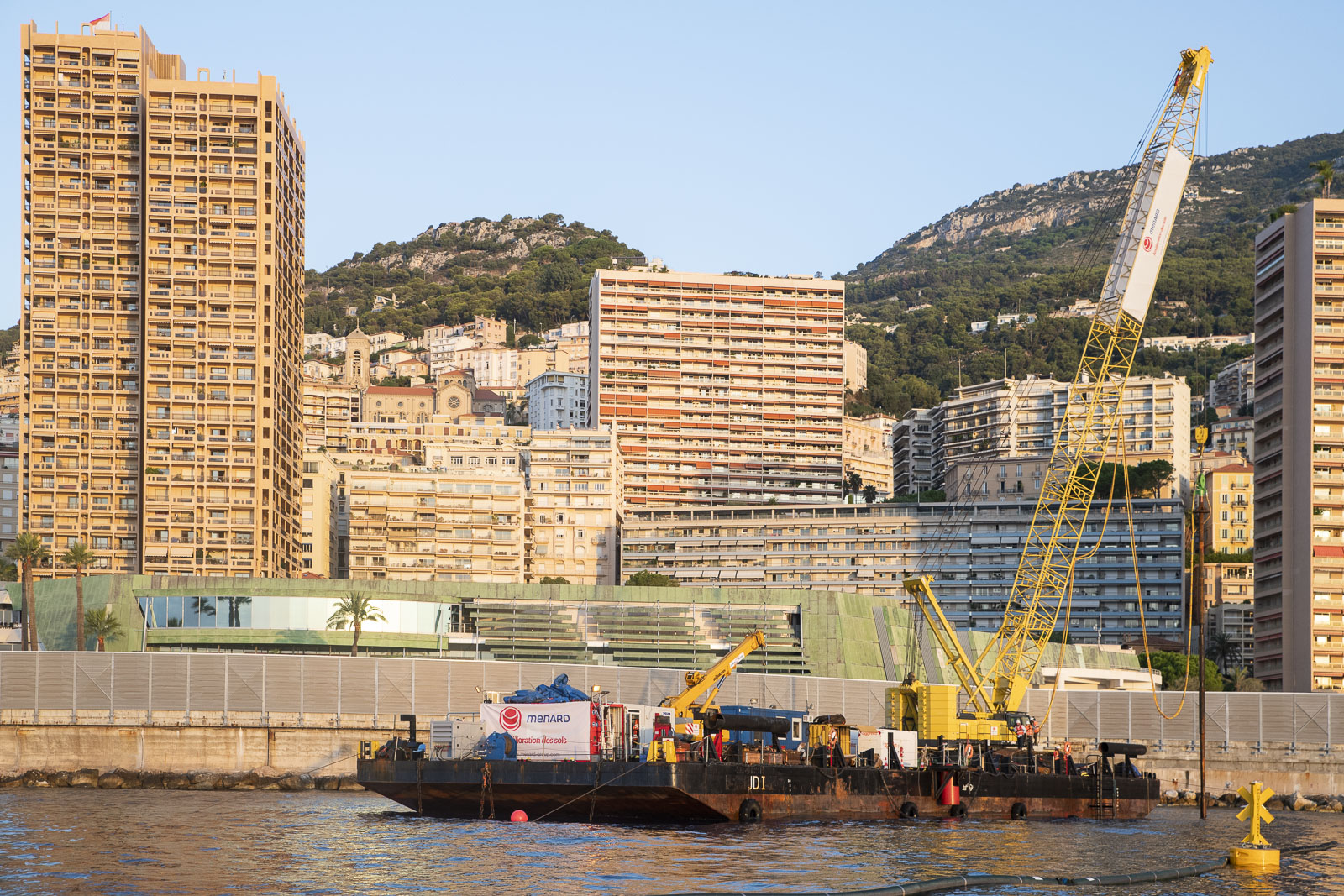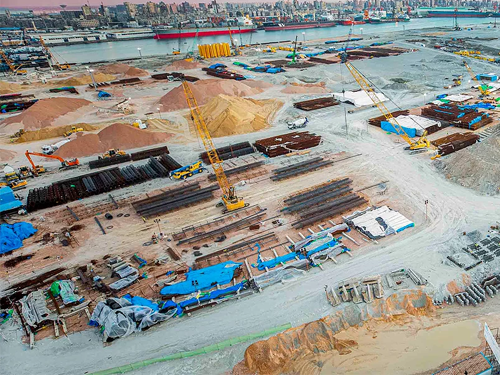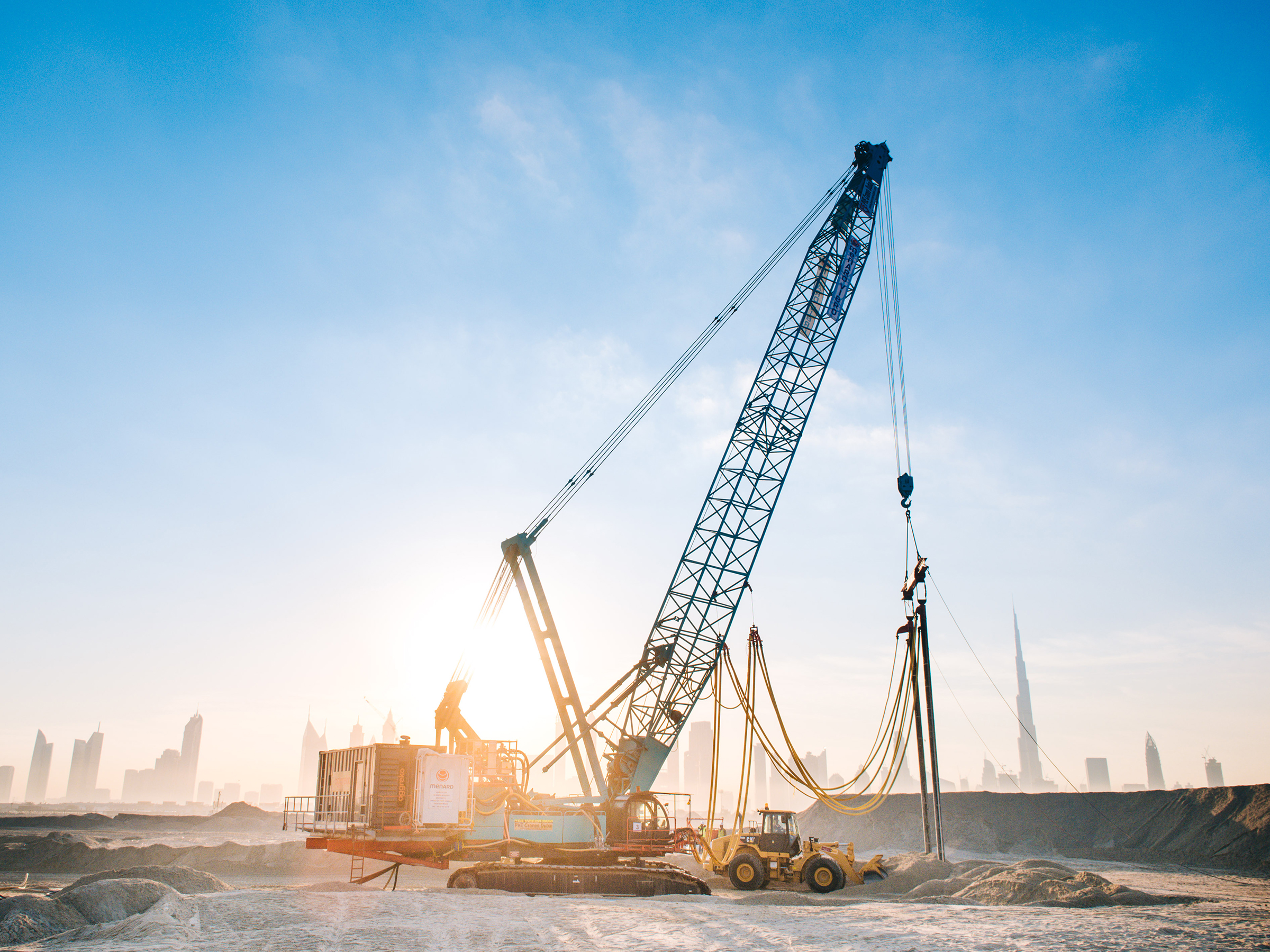Vibrocompaction is a ground improvement technique that densifies the soil by shaking it with a vibro probe.
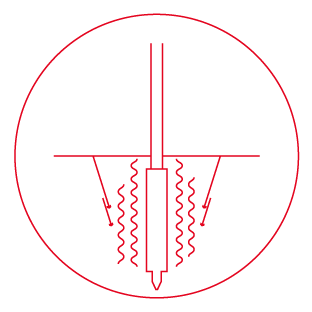
Presentation and key elements
What is vibrocompaction and why do we use it?
Vibrocompaction is a ground improvement technique. It is used to control and reduce settlement, mitigate liquefaction, stabilize or treat hydraulic fill and limit lateral earth pressure behind quay walls.
Basic principle of vibrocompaction
Loose soil or fill can be compacted at depth through insertion of vibrating probes together with a large volume of water to generate localised liquefaction of the soil. This enables the particles to rearrange themselves in a denser formation and thus increases the overall density of the soil.
Execution of vibrocompaction
Vibrocompaction is executed using a rig (excavator, drilling rig or crane) and a vibrating probe. Under the effect of its own weight, the machine’s pull down force (if any), the effect of the jetted water and the sustained horizontal vibrations, the vibrating probe rapidly reaches the desired depth. The probe is then gradually lifted in successive passes, produces in this way a cylinder of compacted ground from 2 to 4.5 meters in diameter depending on the type of soil and probes.
